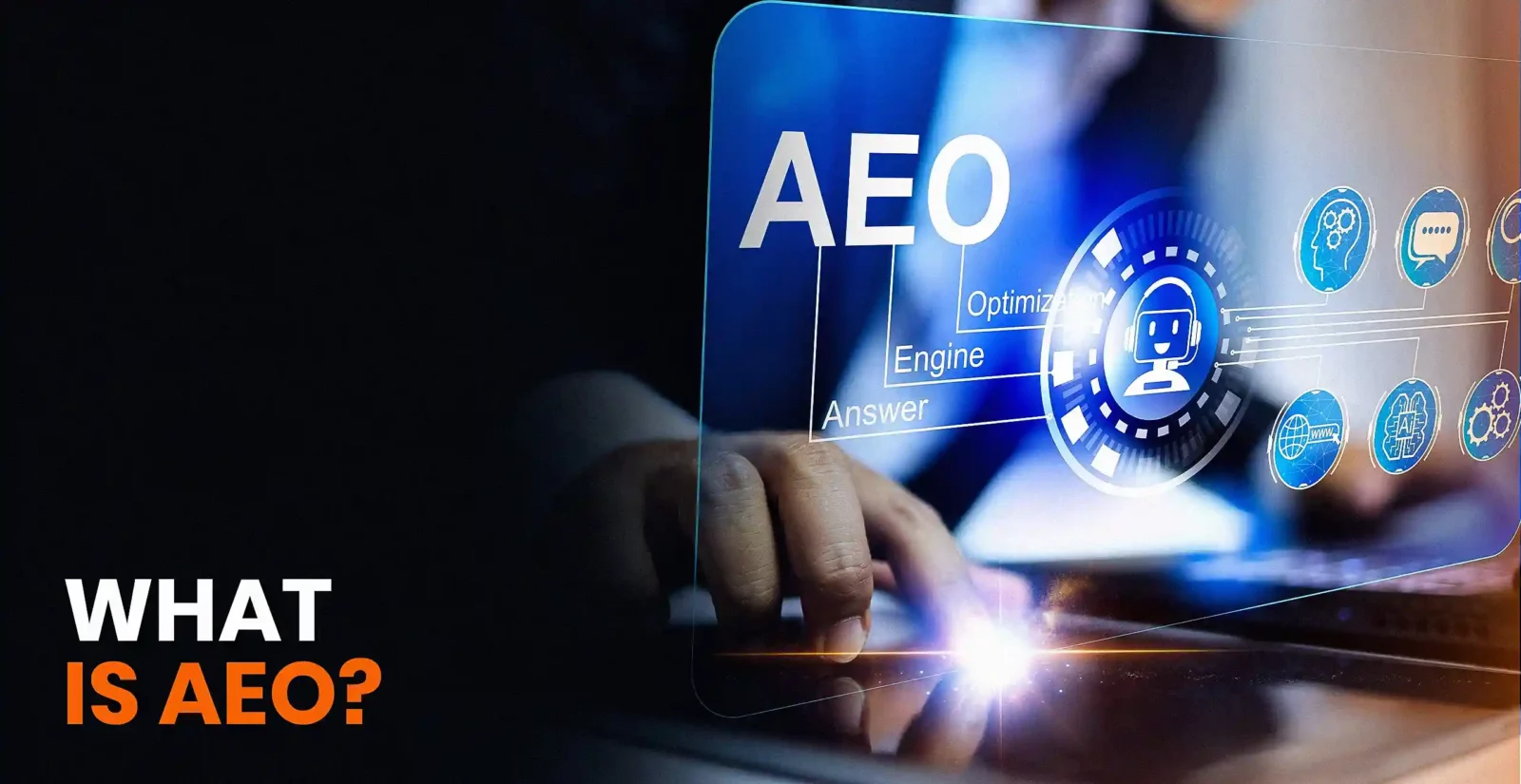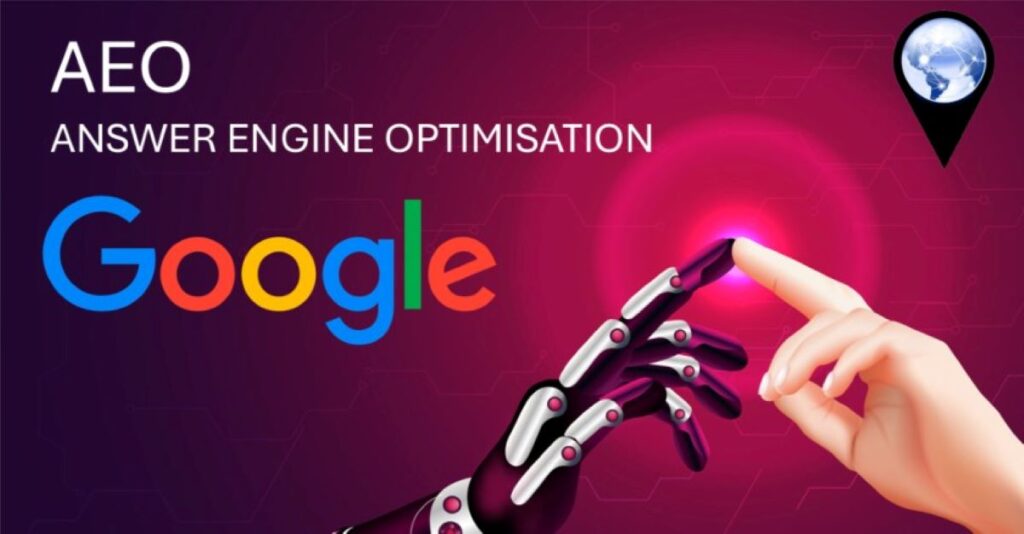Answer Engine Optimisation (AEO) is the next step in improving online visibility. It focuses on organising content in a way that allows AI systems to easily extract and present it as direct answers. Unlike traditional SEO, which aims to drive traffic to websites, AEO ensures that your content appears in answer boxes, summaries, and conversational responses that users are relying on more and more.
The search landscape has changed significantly with the rise of AI tools. Google’s AI Overviews now combine information from multiple sources to provide instant answers at the top of search results. ChatGPT and other similar conversational AI platforms offer detailed responses by accessing large knowledge bases. Voice assistants like Alexa and Siri prioritise brief, structured information for spoken queries.
This shift presents a challenge: how can businesses make sure their content is chosen by these AI systems? The solution lies in strategically structuring content. AI engines prefer information that is well-organised, directly addresses specific questions, and includes proper technical markup. Content must be understandable by both humans and machines.
AEO optimisation agencies specialise in this twofold approach. They reorganise existing content to focus on question-based formats, implement schema markup for better discoverability, optimise for conversational search patterns, and continuously monitor performance across AI platforms. Their expertise assists businesses in maintaining visibility during a time when zero-click searches are becoming more common in user behaviour.
What Is Answer Engine Optimization and Why Does It Matter?
Answer Engine Optimization (AEO) represents a strategic shift from ranking pages to becoming the source AI systems quote directly. AEO focuses on structuring content so algorithms can extract, understand, and present your information as definitive answers within AI-driven search experiences. This new approach is essential for businesses aiming to maintain visibility in an increasingly AI-dominated digital landscape.
Traditional SEO aims to drive clicks to your website through high rankings. AEO importance lies in capturing visibility even when users never click through—a reality as AI-powered search engines increasingly deliver complete answers directly on the results page. Google’s AI Overviews, ChatGPT’s conversational responses, and voice assistants like Alexa now synthesize information from multiple sources into single, authoritative answers that satisfy user queries instantly.
The Zero-Click Search Reality
AI-powered search engines fundamentally change how users consume information. When someone asks Google “What temperature should I bake salmon?” or queries ChatGPT about “best practices for remote team management,” they receive immediate, comprehensive answers without visiting any websites. These zero-click searches now account for a significant portion of search traffic, making traditional click-through metrics less relevant.
AI search optimization addresses this shift by ensuring your content becomes the source these systems reference. Businesses that ignore this evolution risk becoming invisible in search experiences where users receive complete answers without ever seeing a list of blue links.
How AEO Differs from Traditional SEO
The distinction between SEO and AEO centres on user behaviour and content presentation:
Traditional SEO focuses on:
- Keyword density and placement
- Backlink profiles and domain authority
- Meta descriptions that encourage clicks
- Page speed and technical performance
- Ranking position on search engine results pages
AEO prioritizes:
- Direct answer formatting that AI can extract easily
- Question-based content structure matching natural language queries
- Schema markup that explicitly labels content types
- Conversational language patterns reflecting how people actually speak
- Context-rich explanations AI systems can confidently cite
Where SEO asks “How do I rank first?”, AEO asks “How do I become the answer?” This requires rethinking content architecture from the ground up. A traditional SEO approach might optimize a blog post for “best project management software” with keyword variations throughout. An AEO approach structures the same content to ensure it aligns with the principles of Answer Engine Optimization.
How Do AEO Agencies Structure Content for Direct Answers?
AEO agencies structure content by organising information around the fundamental questions users actually ask search engines and AI assistants. This approach centres on the 5 W’s framework—Who, What, When, Where, Why—plus How, ensuring every piece of content directly addresses specific user queries in a format AI systems can easily extract and present.
Building Question-Based Content Architecture
Question-based content forms the backbone of effective AEO strategies. Agencies identify the most common queries in your industry and create dedicated sections that answer each question explicitly. For example, instead of a generic heading like “Product Features,” an optimised structure uses “What features does [product name] include?” This direct question format signals to AI systems exactly what information follows.
The question itself should appear within the first sentence or two of the answer. When someone searches “How long does delivery take?”, the response should begin: “Delivery typically takes 3-5 business days for standard shipping.” This immediate, precise answer increases the likelihood of being selected for featured snippets and AI-generated responses.
Formatting for Maximum Snippet Eligibility
Clear, concise language dramatically improves your chances of appearing in direct answer results. AI systems favour content that gets straight to the point without unnecessary jargon or complex sentence structures. Agencies achieve this through:
- Short paragraphs of 2-4 sentences maximum
- Bullet points for listing features, benefits, or steps
- Numbered lists for sequential processes or rankings
- Bold text to highlight key terms and answers
- Subheadings that break information into digestible chunks using Markdown formatting
A practical example: rather than writing a dense paragraph about product specifications, agencies format the information as a bulleted list with each specification clearly labelled. This structure allows AI to extract specific details without parsing through lengthy text blocks.
Reinforcing Relevance Through Strategic Repetition
Direct answers gain additional weight when the question appears naturally within the response. Agencies weave the original query into the answer without making it feel forced. If addressing “Why is regular maintenance important?”, the response might read: “Regular maintenance is important because it extends equipment lifespan by up to 40% and prevents costly emergency repairs.”
How Does Schema Markup Enhance AI Answer Visibility?
Schema markup acts as a direct communication channel between your content and AI systems, providing structured data that helps search engines and chatbots understand exactly what information you’re presenting. By implementing the right schema types, an AEO Optimisation Agency can significantly increase the likelihood of your content appearing in Google’s AI Overviews and ChatGPT’s answer results.
Which Schema Types Deliver the Best Results for AI Answer Engines?
FAQPage schema transforms your question-and-answer sections into machine-readable formats that AI systems can easily extract and present. When you mark up FAQ content with this schema type, you’re essentially creating a structured database of questions and answers that Google’s AI can confidently pull from. This schema type proves particularly effective for pages addressing multiple related queries, as it allows AI systems to match specific user questions with your precise answers.
HowTo schema provides step-by-step instructions in a format that AI answer engines prioritise for procedural queries. This schema type includes fields for:
- Individual steps with descriptions
- Time required for completion
- Tools or materials needed
- Images accompanying each step
When properly implemented, HowTo schema increases your chances of appearing in rich snippets and voice assistant responses for instructional queries. Google’s AI particularly favours this format when users search for “how to” queries, as it can present the steps directly within search results.
How Do Article and LocalBusiness Schemas Build AI Trust?
Article and Blog schema establishes content credibility by providing metadata about authorship, publication dates, and content updates. AI systems use this information to assess content freshness and authority. The schema includes:
- Author information and credentials
- Publication and modification timestamps
- Article headline and description
- Featured image specifications
This structured data helps AI engines determine whether your content represents current, expert-level information worth citing in answer results. Content with properly implemented Article schema receives preferential treatment in AI-generated summaries because the systems can verify the source’s legitimacy.
LocalBusiness schema becomes essential for businesses targeting location-specific queries through AI answer engines. This schema type communicates:
- Business name, address, and contact details
- Operating hours and service areas
- Customer ratings and reviews
- Specific services offered
What Techniques Optimize Content for Conversational and Voice Search?
Voice search optimisation requires content that mirrors how people actually speak, not how they type. When users ask Alexa, Siri, or Google Assistant a question, they use complete sentences and natural phrasing like “What’s the best Italian restaurant near me?” rather than typing “Italian restaurant London”. Your content must match this conversational tone to appear in voice search results and AI-powered answer engines.
Writing for Natural Speech Patterns
Short sentences work best for voice search compatibility. AI assistants prefer content they can easily parse and deliver as spoken answers. Each sentence should convey one clear idea, typically between 10-20 words. This structure helps voice assistants extract precise answers without stumbling over complex syntax or nested clauses.
The conversational tone extends beyond sentence length. Write as if you’re explaining something to a friend over coffee:
- Use contractions (it’s, you’re, we’ll) to sound more natural
- Address readers directly with “you” and “your”
- Ask rhetorical questions that mirror search queries
- Avoid jargon unless your audience specifically uses those terms
Anticipating Follow-Up Questions
Voice search users often engage in multi-turn …



